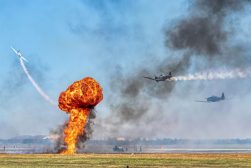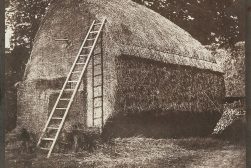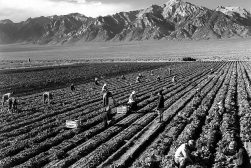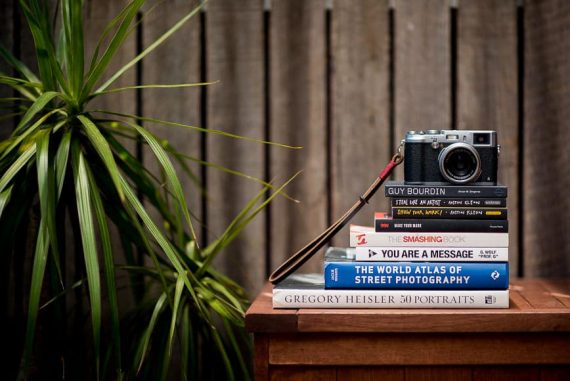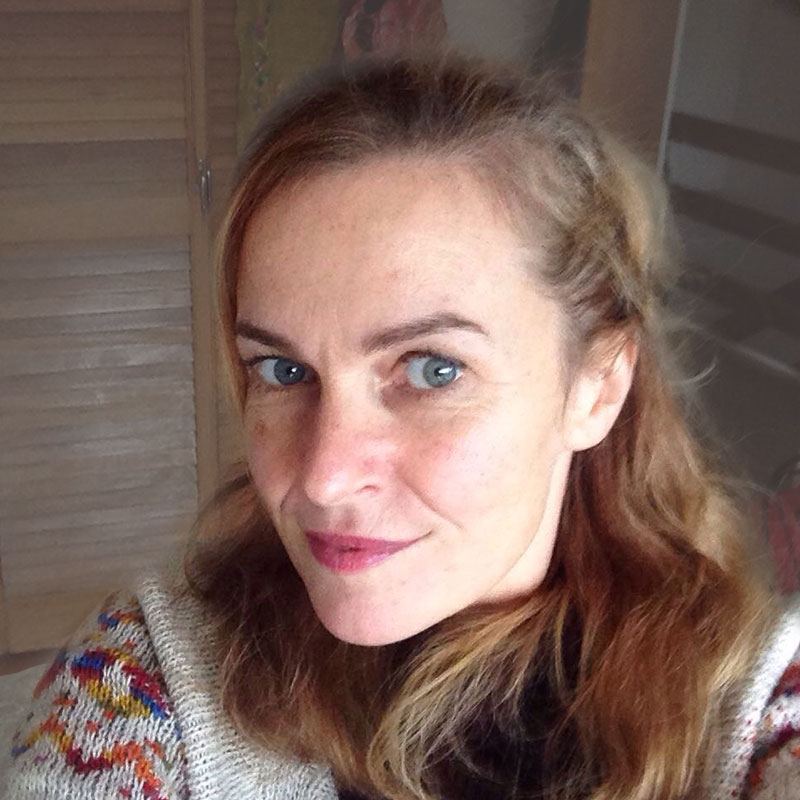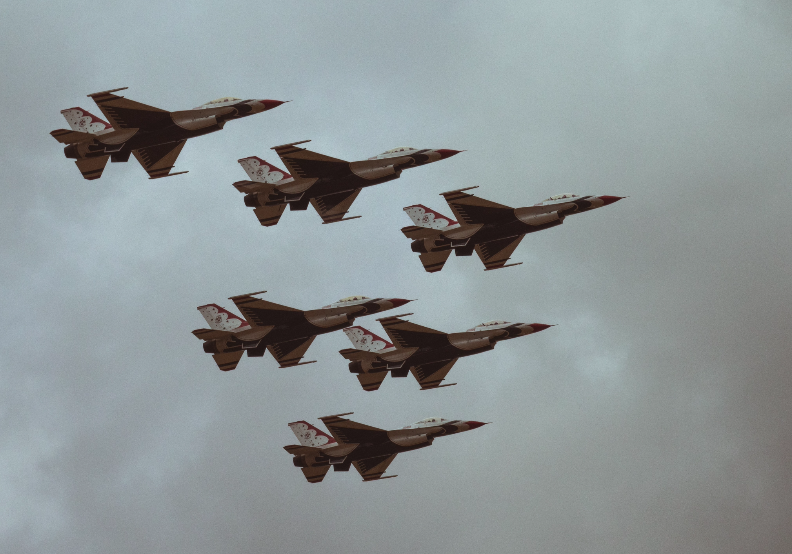
The Importance of War Photography in the Modern Age
Everything to know about war photography including why it's important, how to become a war photographer, and notable war photographers to follow.
Learn | By Judyth Satyn
War from world wars to civil wars make an intense impact on civilian lives, yet in the moment who would think to photograph such horrific events?
War photographers will risk their lives to shoot the perfect shot for those who can not venture to war zones.
In this article, we cover everything you need to know about war photography.
What it is, why it’s important, how to become a war photographer, plus 5 famous war photographers.
Table of Contents
What Is the Purpose of War Photography?
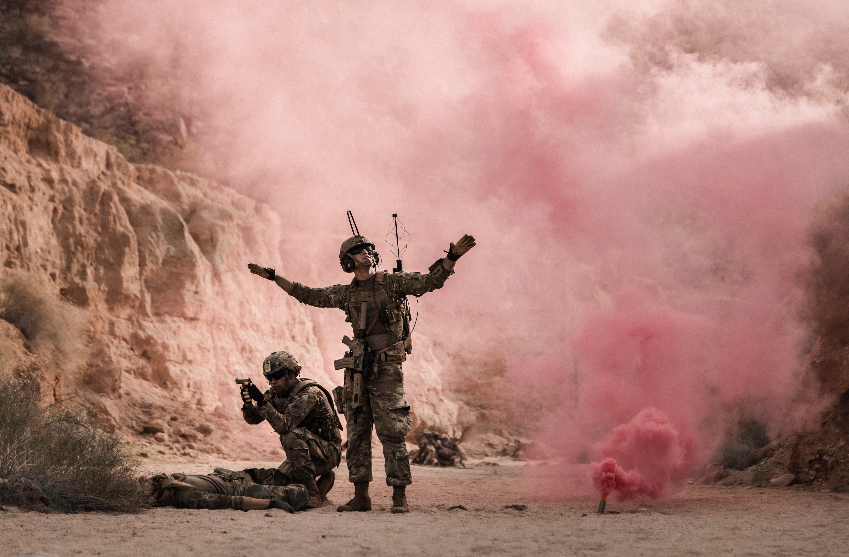
Communicate News
One crucial reason conflict photography is important is to relay information at lightning speed to the general public.
During wartime, people want to know what is happening and what the reason for the conflict is.
And they want to know it fast.
Where have their sons, husbands, and fathers gone and is the situation worsening?
Although stories are also informative, a story takes time to deliver and takes longer for the reader to digest.
An image can cut through cultural, language, and class barriers to instantly tell the news.
A photograph can evoke an emotion in a second, tapping into people’s fears and hopes.
World wars and civil wars make an intense and unimaginable impact on the lives of those trapped in its grip.
Images are impossible to ignore, you can choose to not read war stories.
But you can’t ignore a powerful image glimpsed while walking past a newsstand.
Easy to Share
Images are easy to share within a split second a message can be transferred to millions through media outlets.
A provocative image will immediately grab people’s attention to quickly notify them of the war’s progress.
A photo is concise and cuts to the heart of the topic.
Thus a photo and a headline might be all that is needed to convey an important message.
Record
Photos are an integral part of recording and documenting events during war times to store in historic archives for future generations to study.
Preserving important and monumental events so that we can learn from them.
Freezing a moment in time, a battle, a gunshot, or a civilian’s terror are all integral for achieving insights into living in war times.
What might start to seem normal at the time and therefore not worthy of recording could be forgotten without a photo.
But what appears to be routine could give incredible insights about war times to future generations.
War photos can also be used as evidence in court cases to hold war criminals accountable for their war crimes.
Connected
Footage from a war scene or a natural disaster keeps the public intimately connected with war efforts and the plight of the soldiers.
Images are pieced together, like a jigsaw, to compile a story portraying the misery, confusion, and pain which is the reality of war.
Build Team Spirit
Photography can be used to build a united front to fuel the flame of national spirit through soldiers’ accomplishments.
Emotive and victorious photographs have the power to inspire the public to contribute to war efforts.
Educational
Warzone photography teaches people about the horrors of war and the adversities citizens and soldiers in combat zones lived through.
Propaganda
During war times, governments have been known to censor photos to present the perspective that suits their goal.
What is censored is as important as what is shared.
Communication is the main reason for conflict photography but if it is used as truth or propaganda depends on the distributor.
An image can be cropped, staged, or composed to convey a misleading and contrived story to suit an agenda.
Propaganda is effective at motivating people for a cause they might otherwise have refused to take part in.
Using photos as propaganda peaceful people can be misled to take up arms to fight and support unethical war efforts.
What does a war photographer do?
War photographers take photos and record events in combat zones, areas of conflict, and natural disasters.
Placing themselves in the middle of adversity and putting their lives in danger.
A war photographer’s purpose is to capture scenes to which the general public has no access.
A skilled military photographer captures real-time battle scenes and the terror citizens are forced to endure.
Although combat photography is in a genre of its own it can also be considered photojournalism when used to report current news.
A great warfare photographer will capture war efforts to convey the heart of the war story.
Why Is War Photography Important?
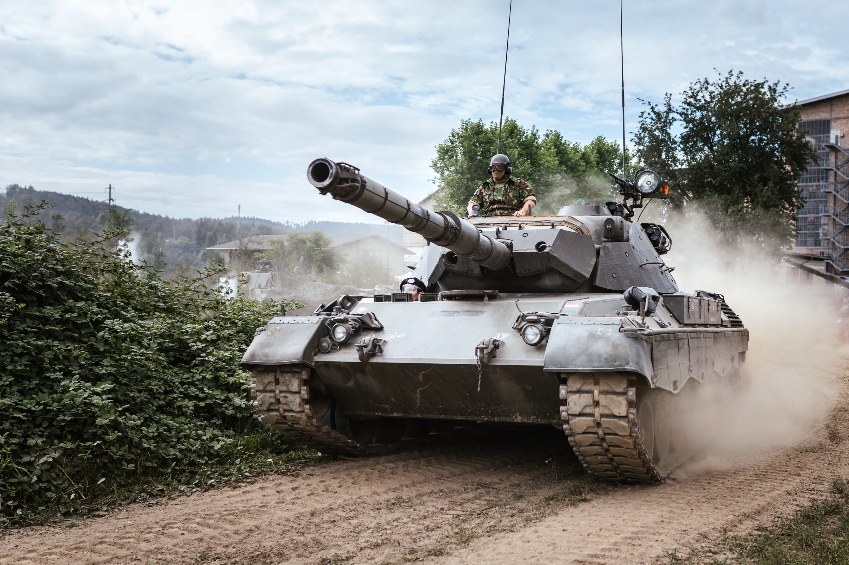
War zones are too dangerous to venture into making it impossible for the average person to witness with their own eyes.
The only way citizens can comprehend war is through stories and imagery brought to them by reporters and photographers willing to risk their lives.
War photographers bring the public an exclusive view of the battle arena.
Taken photos in warzones has its beginnings during the nineteenth-century Mexican-American war.
When an unknown photographer snapped portraits of uniformed generals and soldiers as they prepared for action.
The choice of composition was possibly as much due to the technical restraints of photographic equipment of the time as to an interest in the personal safety of the photographer.
As photographic equipment has advanced so too has conflict photography evolved.
The images of generals standing placidly have since been replaced with terrifying and haunting images of wounded soldiers and civilians.
Previous to photography it was impossible to record live action on battlefields.
There was no insight for the public into the tick that makes a war so devastatingly tock, the tock that makes a war so horrific.
War was safely packaged and presented in the neat untarnished uniform of carefully composed illustrations.
Illustrations don’t have the same ability to impact the viewer as a photo because an illustration is slightly removed from real life.
A photo is a frozen moment in time, sliced from reality, something that did happen.
Why is it so important to show these gruesome slices of time that stop us from sleeping at night?
Why subject people to the adversities of war and conflict?
One reason is to raise awareness about the atrocities of war it is only when people are aware of a situation that it can be changed.
Another reason is that without an insight into the mechanisms of war it is would not possible to truly value the efforts of soldiers.
Nor affiliate with their resulting psychological trauma.
Originally soldiers were chastised for their weakness when they returned shell-shocked from wars.
But now with the help of war photos, we can see the atrocities they were forced not only to witness but to commit.
Thus we can sympathize and have compassion for the trauma resulting from their war efforts.
Another reason war photos are important is the speed at which they can deliver information.
Images are quick and effective at instantly gaining attention and reaching a wide audience.
Photography is a universal language, needing no translation and capable of breaking through cultural barriers.
We can also acknowledge that war photojournalism is important for provoking discussion, debate, and critical thinking surrounding topics on war.
Is war ethical, is war always the only way to solve a problem, and is the military-industrial complex needed?
If the public imagines war as a clean factory line of illustrated soldiers happily knocking each other off like ducks on a rifle training they will never comprehend the horrors of war.
Without photography, war can be pacified into the realm of fiction, but a photo holds it accountable and makes war real.
Is World War or Civil War Photography Ethical?
Picture this a bomb goes off and a man with a camera falls to his knees not because he was hit, not to save a victim but to get a better shot.
It appears callous and heartless to see someone think first of capturing a better shot and not of the people who may need their help.
But photographers capturing war images have to be emotionally detached from the adversities happening around them.
It could be said that the photographer is operating in a different timeline.
A time outside of the crisis moment, one where he knows this shot could save lives in the future.
A war photo could lead to the people being rescued due to their plight gaining recognition.
Is the photographer who takes a photo of a screaming child using their victimhood for their financial gain?
Or is the photographer thinking that he can’t save this child, but hoping that his photo will save others from the same perilous misfortune?
Would the photographer be there if they were not taking the photograph?
Maybe it comes down to the photographer’s motives and what the photograph is used to achieve.
War dehumanizes people and turns them into disposable victims, numbers, and mere photos.
People have a morbid fascination with destruction and gore does our consumption of war images also make us unethical as purveyors of someone else’s loss and agony?
Nick Ut is the photographer who shot the iconic photo Napalm Girl in 1972 during the Vietnam War.
His calculated photographic action captured an image that remains etched in the memory banks of whoever sees it.
He may not have helped the terrified girl at the time, but his image and others like it stirred citizens to call for an end to the war.
In an alternate world, we hope that this type of photography can be used to bring peace and an end to war.
How Do You Become a Conflict Photographer?
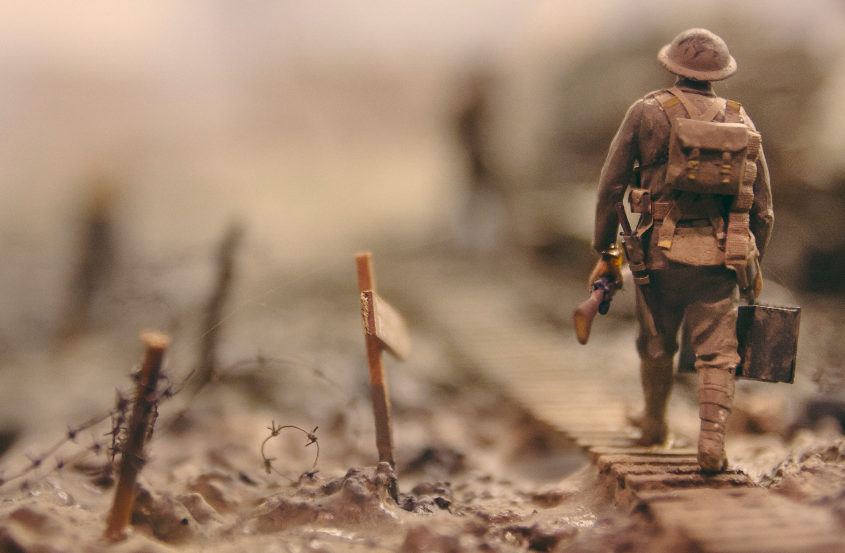
So you’ve grown up and the idea of being a truck driver or ballet dancer hasn’t met your aspirations but the idea of being a battlefront photographer is appealing to you.
The idea of leaping through muddy trenches while dodging bullets and maybe the odd grenade strikes your fancy.
The cutting-edge arena of danger thrills you, only you don’t want to be the one shooting a gun, your want to be shooting images.
It is not everyone’s dream but if it’s yours then read on for some practical ideas on how to become one.
Volunteer
Take the volunteer path by becoming a volunteer photographer for an organization or charity that is situated in a conflict zone.
Entering a war zone isn’t a matter of disembarking a plane and catching a cab to the war location so joining an organization is a good way to gain access.
Internship
Apply for an internship with the government or military.
This is a great way to get experience and recognition while building up your portfolio.
Work Freelance
Choose to work as a freelance photographer.
Go to the war location and start capturing photojournalism-styled war photos.
You can then pitch to magazines, newspapers, and online media platforms.
If you are a freelancer you will have the freedom to shoot as you wish without being censored.
Publish a Book
Another way to forge a career as a combat photographer is to build a portfolio and publish a book showcasing your works.
This could lead to working with the military or news outlets when they see a demonstration of your striking work and your ability to navigate war zones.
Study
Instead of studying photography, a degree in photojournalism would be the preference.
Warzone photography is first news and later a picture.
Apply for a Job
Apply to work for a news outlet or the military.
The advantage is if you get the job you will be given a salary and on-location support.
Although your reputation could be stigmatized by a publication’s political views.
Skills and Qualifications Needed
A degree in photojournalism is the standard qualification expected of a combat photographer.
War photographers convey news through their images so understanding how an image is perceived by an audience is important.
A high level of photographic skill and technical knowledge is essential.
A wartime photographer will need to know their camera back to front as there will be no time to stage or recapture a shot during combat.
They will also need a combination of very unique skills to navigate and work in a war zone.
The mental and emotional capability to handle situations of high stress is important when working in conflict zones.
Unexpected events will happen daily so combat photographers will need to be in control of their mental health to help them cope with the horrific adversities they will see.
It takes a calculating individual with nerves of steel to think rationally in a crisis.
These photographers will need to be prepared to place themselves in danger, to be injured or even killed.
A warfare photographer could be killed and is more than likely going to be injured thus they need to be in optimum health.
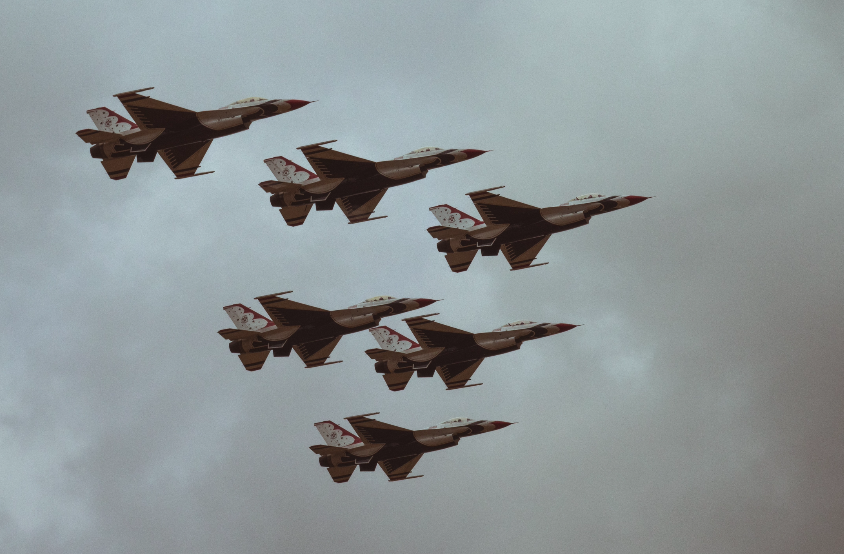
How Much Does a War Photographer Make?
A war photojournalit’s salary will be paid according to the risk associated with their career and the publication they are working for.
Working for the US military as a photographer could earn up to $75,000 a year.
Selling photos to news publications the amount a photographer earns will vary depending on different factors, including quality, amount, and demand.
5 Famous War Photographers You Should Know
Today we are desensitized to cruelty as we watch a record-high number of brutal crimes brought directly to us via the flickering screen.
These war photographers are renowned for their uncanny ability to cut past our desensitized minds to deeply stir us.
James Nachtwey
View this post on Instagram
“I’ve been a witness, and these images are my testimony, The events I have recorded should not be forgotten and must not be repeated” James Natwey.
Since 1981, James Nachtwey dedicated his career to taking photos of wars.
War photos of the Vietnam War and the civil rights movement in America inspired him to start his career.
While working as a truck driver he taught himself photography.
Nachtwey has extensive experience photographing war zones.
He documented the breakup of former Yugoslavia, the wars in Chechnya, natural disasters in Japan, the genocide in Rwanda, and more recently the war in Ukraine.
Nachtwey received his first combat injury from a grenade when photographing the United States invasion of Iraq.
Always dedicated to capturing a good shot, he took photos of the aftermath of the grenade before passing out.
In 2001 a documentary was made about his life and work, War Photographer, directed by Christian Frei.
He has received numerous rewards for humanitarian causes and art and has had many solo exhibitions worldwide, and has written books, Deeds of War and Inferno.
Eddie Adams
In his lifetime Eddie Adams covered 13 wars and is best known for taking one of the most famous war photos.
During the Vietnam War Adams captured a shot of a War General cooly executing a Viet Cong prisoner in the streets of Siagon.
The impact of the image reverberated through the public resulting in anti-war sentiments.
During his lifetime Adams won over five hundred awards for his photography, including the 1969 Pulitzer Prize.
Margaret Bourke-White
Margaret Bourke-White was the first woman allowed to enter World War II conflict zones.
Bourke-White was also the first professional Western photographer permitted to enter the Soviet Union.
Her conflict photography career included the Korean War, India-Pakistan partition violence, and World War II.
Adam Ferguson
View this post on Instagram
Adam Ferguson is an Australian photographer who gained recognition during the war led by the US in Afghanistan.
Here he worked as a photojournalist for Time Magazine, National Geographic, and The New York Times.
Today his focus is using photography to document the of impact Geopolitics on ordinary civilians.
In 2018 he was named Photographer of the Year by Photo District News and has received numerous other awards.
Carolyn Cole
View this post on Instagram
Carolyn Cole is a seasoned conflict photographer documenting wars in Iraq, Haiti, Afghanistan, and Kosovo for the Los Angelos Times.
A conflict photographer by profession but a peace activist by heart.
Cole won the Pulitzer Peace Prize in 2004 for her coverage of the conflict in Liberia.
A Brief History of War Zone Photography
Military photography, while a difficult and sometimes dangerous pursuit, has long been a critical means of documenting history.
Its origins go back to the 19th century, and it has developed in tandem with technological advances in photography and journalism.
Here’s a brief history:
- The mid-1800s: photographing warzones began during the Mexican-American War and Crimean War, with photographers like Roger Fenton. Early technical limitations meant most photos were posed or only depicted the aftermath.
- American Civil War (1861–1865): Mathew Brady was among those documenting this war, although again, combat was rarely depicted.
- World War I (1914–1918): While this war was widely photographed, heavy censorship often suppressed the grimmer images of trench warfare.
- Spanish Civil War (1936-1939): It was during this conflict that photojournalism truly began to mature. This war saw the rise of Hungarian photographer Robert Capa, who is perhaps best known for “The Falling Soldier,” an image that purports to depict a Republican soldier at the very moment of death.
- World War II (1939–1945): Advances in camera technology allowed photojournalists like Robert Capa and Dorothea Lange to capture more candid, action-oriented shots.
- Korean and Vietnam Wars (1950–1975): Realism increased in war photos, with shocking images from Vietnam by photographers like Eddie Adams turning public opinion against the war.
- Modern Conflicts (Late 20th Century to Present): With the advent of digital photography and the internet, images of conflicts like those in Bosnia, Iraq, and Afghanistan can be shared almost instantly. Despite technological advancements, dangers for war photographers remain high.
FAQ
Do war photographers get paid?
Yes, war photographers get paid.
Some photographers work freelance and sell their photos to different publications.
Others are employed full-time by a newspaper or the military and receive a salary.
Can anyone be a war photographer?
Anyone can decide to be a combat photographer.
However, it takes a very special skill set to be able to work under pressure in a chaotic conflict zone.
Not only photography and photojournalism skills are required but they must be physically fit and psychologically prepared.
Is war photography morally right?
Whether photos captured during war are morally right is an issue that is constantly up for debate.
News and records of war are important and photographs communicate within an instant like no other medium the horrors of war.
But what of the people captured, is the news shared more important than the violation of their privacy?
What is the most famous war photo ever?
The most famous image captured during the war times is up for dispute.
Napalm Girl, shot during the Vietnam War, depicts a naked girl helpless and screaming.
This is one of the most famous war photos for demonstrating the horrors of war inflicted on the innocent.
How many photographers died in WWII?
During World War II, thirty-seven photographers and print correspondents were killed.
Are war photographers soldiers?
Conflict photographers are not trained in combat so they are not what one would typically classify as a soldier.
However, the definition of a soldier is simply one engaged in military service in the army.
This would mean a conflict photographer employed by an army is a soldier, but a freelance war photographer is not.
What is the oldest war photo?
The oldest war photo was not just one photo but a collection of 50 daguerreotypes taken of the Mexican-American War.
The photos depict staged portraits of generals and very little of the war action.





